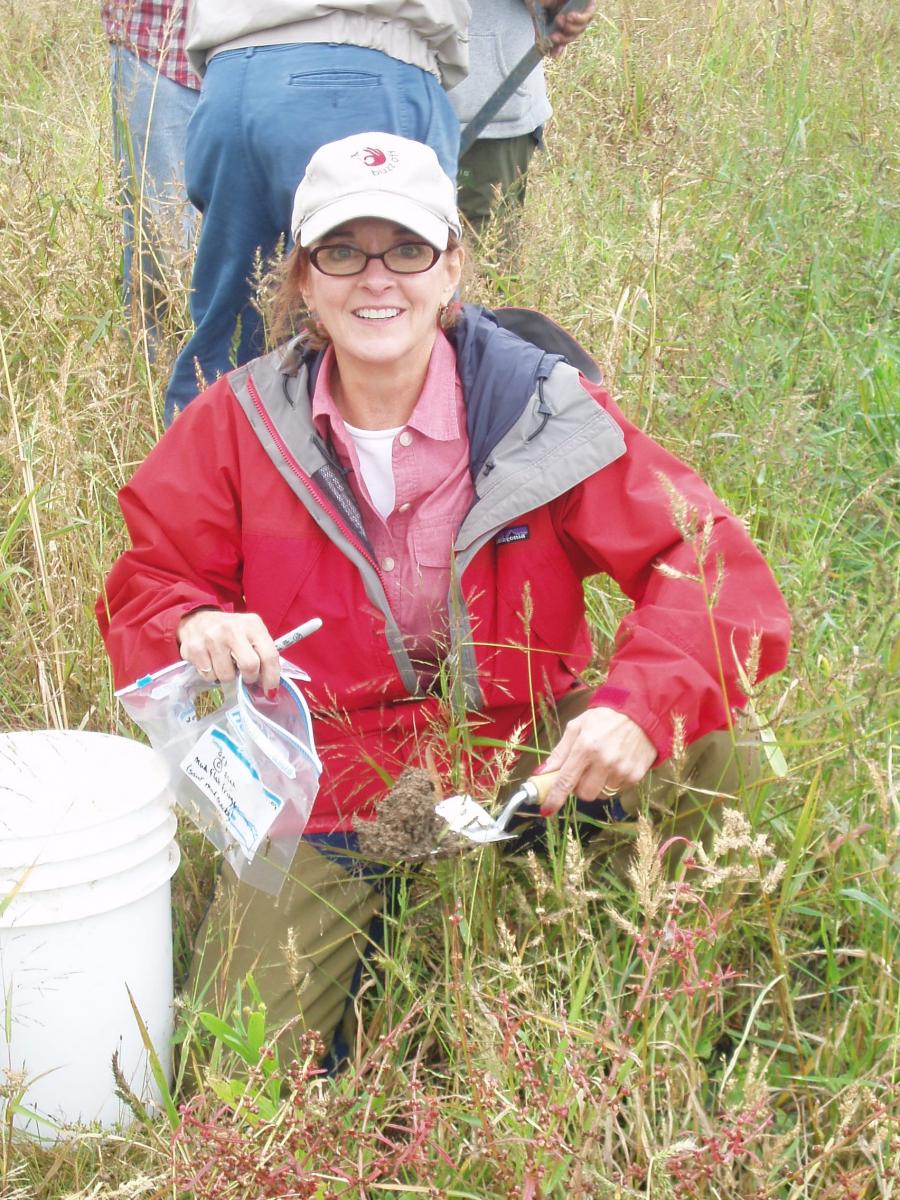Project overview
Goose Pond Fish and Wildlife Area (GPFWA) is an 8,000 acre wetland restoration project in Greene County, Indiana, approximately 90 miles southwest of campus. The property map created by the Indiana Department of Natural Resources and identifies the roads and restoration units on the property.
The wetland is being restored under the Wetland Reserve Program (WRP) by the Natural Resources Conservation Service (NRCS), a division of the United States Department of Agriculture, and is currently one of the largest WRP restorations in the U. S. The restoration property boundaries of GPFWA are presented in an aerial photograph (CEES map), the larger western section referred to as Goose Pond, and the smaller eastern section Beehunter Marsh.
Background and importance
The restoration of the Goose Pond Fish and Wildlife Area provides many benefits and opportunities including economic development, scientific research, science education, wildlife habitat, and outdoor recreation.
Goose Pond Fish and Wildlife Area (GPFWA) is an 8,000 acre wetland restoration project in Greene County, Indiana, approximately 90 miles southwest of campus. The property map created by the Indiana Department of Natural Resources and identifies the roads and restoration units on the property. The wetland is being restored under the Wetland Reserve Program (WRP) by the Natural Resources Conservation Service (NRCS), a division of the United States Department of Agriculture, and is currently one of the largest WRP restorations in the U. S. The restoration property boundaries of GPFWA are presented in an aerial photograph (CEES map), the larger western section referred to as Goose Pond, and the smaller eastern section Beehunter Marsh.
This area was originally described as containing marsh, prairie, forest, and brushy ponds by the first surveyors circa 1815 (Survey map, 1815). The soils are poorly drained and contain primarily booker clay, booker mucky clay, and zipp brown silty clay with a top clay layer approximately 5-7 inches thick (Soil Survey of Greene County, Indiana). Beginning in the late 1800’s the area was extensively ditched and drained for agriculture. Varying degrees of farming success were met and the last owner enrolled the property in the WRP, granting a perpetual conservation easement to the USDA NRCS. The last crops were harvested in the fall of 2000. Since then, the land has been undergoing restoration to approximate the wetland, prairie, and woodland it was originally. In the fall of 2005 the State of Indiana purchased the property from the landowner and there is now public access, hence the renewed interest in conducting research on this unique property.
Restoration was completed on the Beehunter Marsh section (~1100 acres in WRP) in 2003. The Goose Pond (~5900 acres in WRP) is still under construction with the major work to restore the 2500 acre main pool, a shallow glacial lake that existed ~10,000 years ago, beginning in the fall, 2006, with completion of the main pool expected in 2009. Construction to widen State Highway 59, which runs adjacent to the main pool, is targeted to begin in 2008.
The restoration is already attracting a wide variety of wetland and migratory birds. Birds not sited in Indiana since the early 1900’s, such as the King Rail, are now establishing nests. The state-endangered crawfish frog is present, and migratory waterfowl and shore birds are finding GPFWA in astonishing numbers. The restoration has continental implications to shift migratory bird patterns and become both an important stopover and high quality nesting habitat.
The large scale of this restoration offers a unique opportunity to study many other aspects of wetland restoration:
- Wetland design methods on projects of this scale and hydrology.
- Soils development with the change from heavy agriculture use to the variety of environments created as part of the restoration.
- Fish and wildlife, biological, vegetative responses including invasive species.
- Water quality of both surface and groundwater, acid mine drainage.
- Nutrient cycling, carbon sequestration, nitrogen and phosphorous chemistry.
- Wetland monitoring technology and methods.
- Socio-economic impact on the community.




